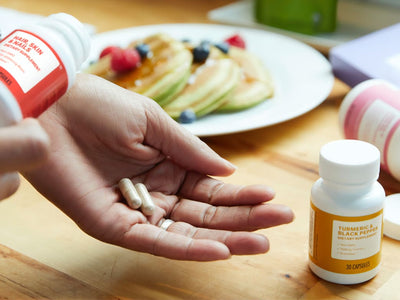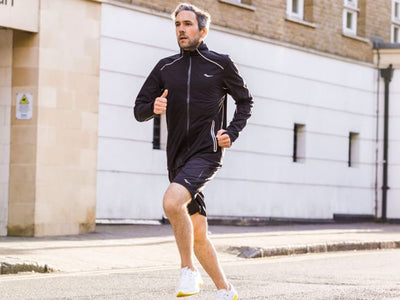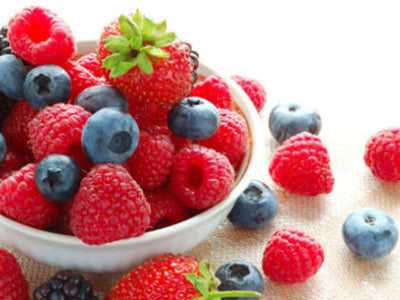Eat Your Zinc
Posted by Jim Applegate on

With so much talk about getting Zinc in your diet right now here are some foods that you would increase your Zinc intake.
Zinc isn’t the best-known dietary mineral, but it’s necessary for a variety of essential processes in the body, including proper immune function, cell growth, wound healing, and insulin activity. And because it plays a crucial role in prostate health, testosterone production, and sexual function, zinc is especially important for men.
Several factors influence how well your body absorbs zinc. Phytate, a compound found in grains and legumes, inhibits the absorption of zinc and other minerals, including calcium. Soaking dried beans and grains before cooking them dramatically reduces phytate and makes minerals more absorbable.
Iron supplements can also block zinc absorption (but iron in foods doesn’t seem to have the same effect). And while protein enhances the body’s uptake of zinc, the type of protein is important. For instance, casein—a protein found in dairy products—seems to inhibit zinc absorption.
To make sure you’re getting plenty of zinc, soak beans and grains before cooking to inactivate phytate, eat protein from varied sources, and include a variety of high-zinc foods in your daily diet. Some of the best:
1. Oysters
Oysters are an outstanding source of zinc; six medium oysters have about 60mg of zinc, or 500 percent of the daily value (DV). Other shellfish, including clams, mussels, and shrimp, are good sources as well.
Recipe Tips: Arrange whole oysters on a grill and cook until the shells open; sauté shucked oysters with garlic, then toss with cooked linguine, olive oil, and parsley; simmer whole oysters in broth with shallots and tarragon, then drizzle with melted butter and minced tarragon.
2. Bison

— BetterNutrition
Bison, also called “buffalo,” has 4.5mg of zinc, about 30 percent of the DV, in a 3-oz. serving. Plus, it’s higher in omega-3 fatty acids and lower in saturated fat and cholesterol than other kinds of red meat. Beef and lamb are also significant sources of zinc (chicken and turkey have less).
Recipe Tips: Top grilled hearts of Romaine with thinly sliced cooked bison, cherry tomatoes, and Kalamata olives; make burgers with ground bison, minced shallots, and horseradish; thread cubed bison on a skewer with red peppers, green peppers, onions, and mushrooms, and grill until tender.
3. Quinoa
Quinoa is a better source of zinc than rice or oats, with 2mg—about 13 percent of the DV—per cup. And it’s higher in protein than other grains, with an excellent lineup of antioxidants.
Recipe Tips: Purée quinoa, kidney beans, mushrooms, and onions in a food processor, then form into burgers and cook; combine quinoa flour with baking powder, coconut milk, and blueberries, and cook into pancakes; sauté cooked quinoa with scallions, carrots, ginger, shredded bison, and tamari for fried “rice.”
4. Pumpkin Seeds
Pumpkin seeds are a great source of zinc, with about 2.5mg of zinc, or 17 percent of the DV, in a quarter cup. And pumpkin seeds have been shown to benefit benign prostatic hyperplasia (BPH), or an enlarged prostate gland. Sesame seeds, flaxseeds, and hemp seeds are also good sources of zinc.
Recipe Tips: Combine pumpkin seeds, cooked quinoa, corn kernels, diced red peppers, cilantro, and cumin-lime vinaigrette; toss pumpkin seeds with olive oil, garlic powder, and paprika, and roast until golden; make hummus with pumpkin seeds, cooked chickpeas, garlic, lemon juice, and olive oil.
5. Cashews
Cashews are one of the best nuts for zinc—a one-ounce serving has 2mg, about 14 percent of the DV. Other nuts have a similar amount. And some studies link a higher consumption of nuts in general with enhanced sexual function in men.
Recipe Tips: Sauté cashews, broccoli, red peppers, onions, garlic, and bison strips, and serve over quinoa; mix cashews with coconut oil, cardamom, and cinnamon, and roast until golden; toss cooked Brussels sprouts with roasted cashews, blue cheese, and minced red onions.
6. Kidney Beans
Kidney beans and other beans are fairly good sources of zinc. One cup of kidney beans contains 1.8mg, or about 12 percent of the DV. Kidney beans are also high in antioxidants, and all beans are linked with a lower risk of prostate cancer.
Recipe Tips: Simmer cooked kidney beans, onions, green peppers, cumin seed, and garlic in broth for a Middle Eastern-style soup; toss kidney beans with green beans, chickpeas, minced scallions, and a red-wine vinaigrette; make a fast chili with cooked kidney beans, ground bison, onions, and canned chipotle peppers.
7. Crab
 - Better Nutrition
- Better Nutrition
Crab is especially high in zinc; a 3-oz. serving of cooked Alaskan crab has 6.5mg, about 43 percent of the DV. It’s also loaded with protein, and low in saturated fat.
Recipe Tips: Toss cooked crab with cherry tomatoes, avocado, arugula, minced basil, and a creamy vinaigrette; purée avocado, broth, and lime juice, chill, and top with cooked crab; sauté crab meat with leeks, garlic, and red pepper flakes and top with minced parsley.
Written by Lisa Turner for Better Nutrition and legally licensed through the Matcha publisher network. Please direct all licensing questions to legal@getmatcha.com.

![[Podcast] Fection and your immune system](http://www.drugfreehelpstore.com/cdn/shop/articles/Herbs_that_Heal_Fection_7e29d6b6-3780-4baa-8a8c-3dd0017f26fa_400x.jpg?v=1586897195)






